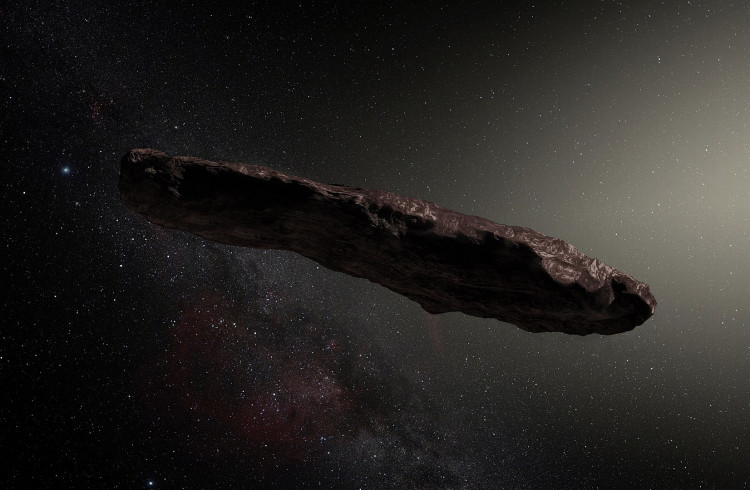Harvard astronomer Prof. Abraham Loeb still continues to argue the first "interstellar object" to enter our solar system in 2017 has an "artificial origin" and might have been a fully operational probe sent intentionally to the vicinity of the Earth by an alien civilization.
Loeb, chair of Harvard's Department of Astronomy, gained international attention and criticism for claiming the interstellar object named "'Oumuamua" by NASA is "of artificial origin. One possibility is this mystery object is a light-sail floating in interstellar space as debris from an advanced technological equipment."
He contended 'Oumuamua's "excess acceleration," or its unexpected boost in speed as it traveled through and out of our Solar System in January 2018, made this object in reality, a "light-sail spacecraft."
Loeb and Shmuel Bialy expanded on this claim in published study, "Could Solar Radiation Pressure Explain 'Oumuamua's Peculiar Acceleration?" Now, Loeb makes his case in greater detail in his upcoming book, "Extraterrestrial: The First Sign of Intelligent Life Beyond Earth," out Jan. 26.
Loeb tells a compelling story as to why he believes 'Oumuamua wasn't just another piece of space rock but was actually an alien spacecraft. 'Oumuamua transited our solar system from the direction of Vega, a star 25 light-years away, and intercepted our solar system's orbital plane on Sept. 6, 2017.
On Sept. 9, 'Oumuamua's trajectory brought it closest to the Sun. At the end of September, it hurtled past Venus at a speed of 58,900 miles per hour. On Oct. 7, 'Oumuamua shot past Earth's before "moving swiftly toward the constellation Pegasus and the blackness beyond," Loeb writes in his book.
'Oumuamua, is a Hawaiian word meaning "a messenger that reaches out from the distant past." Formally designated 1I/2017 U1, 'Oumuamua was discovered by Robert Weryk using the Pan-STARRS telescope at Haleakala Observatory in Hawaii, on Oct. 19, 2017, or 40 days after it passed its closest point to the Sun.
Loeb's arguments 'Oumuamua might in all probability be an alien light-sail spacecraft receive more evidence in his new book. He again said 'Oumuamua's unusual properties led him to conclude this object is an alien spacecraft.
For one, 'Oumuamua's dimensions were unnatural for any kind of space rock such as asteroids. Based on radar measurements, 'Oumuamua's was described as "cigar-shaped" and astronomers concluded the object was at least five to 10 times longer than it was wide.
Loeb argues no naturally occurring space body ever seen has had these dimensions.
"This would make 'Oumuamua's geometry more extreme by at least a few times in aspect ratio -- or its width to its height -- than the most extreme asteroids or comets that we have ever seen," writes Loeb.
'Oumuamua also exhibited actions inconsistent with a hunk of rock hurtling mindlessly through space. Because of this, scientists have been at odds to explain Oumuamua's actions, unusual features, and precise origins.
Scientists first called 'Oumuamua a comet and then an asteroid. Unable to agree, they made 'Oumuamua the first member of a new class of thing. They called it an "interstellar object."
'Oumuamua was described back then as an elongated, dark red object that shows no signs of a cometary tail or coma despite its close approach to the Sun. It's 10 times as long as it is wide and is tumbling along at speeds of 315,000 km/h.
Loeb also points out 'Oumuamua was unusually bright. It was at least "ten times more reflective than typical solar system [stony] asteroids or comets."
He compared 'Oumuamua's surface to that of shiny metal. The anomaly that really pushed Loeb toward his conclusion 'Oumuamua is a spacecraft was the way 'Oumuamua moved.
"The excess push away from the sun -- that was the thing that broke the camel's back," he said.
He based this conclusion on 'Oumuamua's "excess acceleration," or its unexpected boost in speed as it traveled through and out of our Solar System in January 2018.






